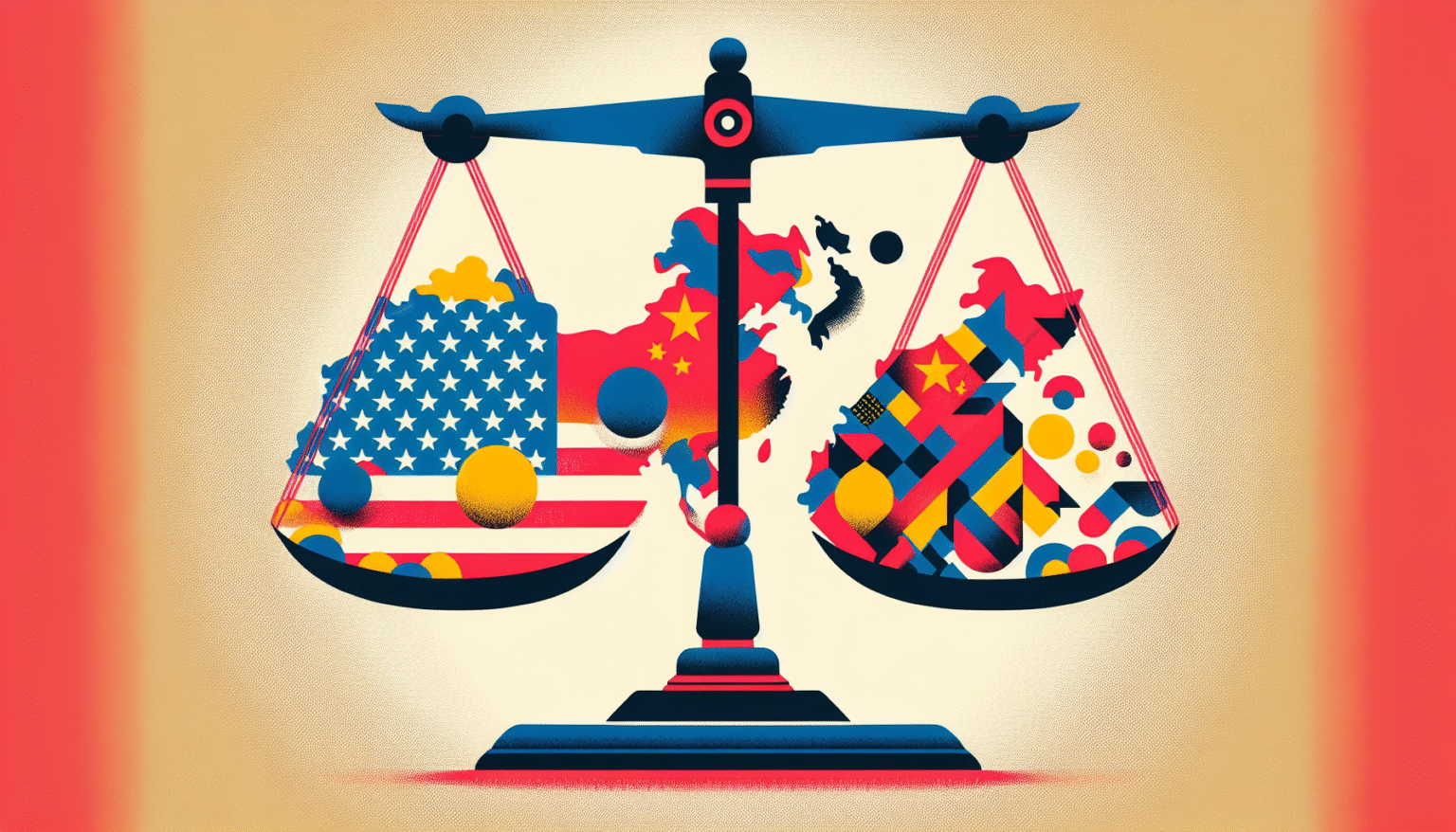Understanding America’s Geopolitical Strategy in Asia
Historical Context
The geopolitical dynamics of Asia have long been influenced by a variety of historical events that have shaped the regional landscape. Post-World War II, the United States emerged as a global superpower, exerting influence across Asia through military alliances, economic partnerships, and democratic values. This set the stage for an intricate balance of power, particularly in the context of China, a rising power with ambitions that challenge the status quo.
The Rise of China
Since the late 20th century, China’s economic growth has transformed it into a formidable force on the world stage. With projections indicating it could surpass the U.S. economy, Beijing has pursued an assertive foreign policy, particularly in the South China Sea, East China Sea, and around Taiwan. As China expands its military capabilities, the U.S. perceives this as a direct challenge to its dominance in the Asia-Pacific region.
Key Components of U.S. Strategy
Military Alliances and Partnerships
-
Strengthening Alliances:
The U.S. maintains robust alliances with countries such as Japan, South Korea, and the Philippines. These partnerships serve as a deterrent against Chinese aggression. Joint military exercises, such as the annual Rim of the Pacific (RIMPAC) drill, enhance interoperability among allied forces, demonstrating a united front. -
Quad Initiative:
The Quadrilateral Security Dialogue, or Quad, involves the U.S., India, Japan, and Australia. This strategic coalition aims to promote a free and open Indo-Pacific, countering China’s influence. By coordinating policies on security, trade, and technology, the Quad seeks to create a multipolar balance of power. -
ENHANCED MILITARY PRESENCE:
The U.S. has bolstered its military presence in Asia with bases and assets strategically positioned throughout the region. Deployments of advanced systems like THAAD (Terminal High Altitude Area Defense) in South Korea serve as deterrents against potential missile threats from North Korea and China.
Economic Engagement
-
Trade Agreements and Investments:
The U.S. has engaged in economic partnerships to secure trade routes and enhance regional stability. Agreements such as the U.S.-Japan Trade Agreement are crucial for ensuring economic ties while containing China’s economic clout. -
Indo-Pacific Economic Framework:
Launched in 2022, this initiative aims to deepen economic cooperation with key partners throughout the Indo-Pacific. By enhancing supply chain resilience and addressing issues like digital trade and energy security, the framework supports U.S. interests while countering China’s Belt and Road Initiative (BRI).
Diplomatic Initiatives
Promoting a Rules-Based International Order
The U.S. advocates for a rules-based international order that discourages coercive actions and emphasizes respect for international law, particularly regarding maritime disputes. By supporting international institutions like the United Nations and the Association of Southeast Asian Nations (ASEAN), the U.S. seeks to promote stability and cooperation in Asia.
Engagement with ASEAN
The Association of Southeast Asian Nations plays a pivotal role in America’s strategy in Asia. The U.S. has increased its diplomatic engagement with ASEAN, ensuring that Southeast Asian nations are integrated into broader security frameworks and are not fully beholden to China. Initiatives to strengthen cybersecurity, counter-terrorism efforts, and humanitarian assistance exemplify this engagement.
Technology and Cybersecurity
-
Technological Competition:
The U.S. recognizes that technology is a significant battleground in the geopolitical struggle against China. Initiatives like the CHIPS and Science Act focus on semiconductor production and technology supply chain resilience, aiming to reduce reliance on Chinese technology. -
Cybersecurity Cooperation:
Cyber threats from state and non-state actors are a significant concern in U.S.-China relations. Strengthening cybersecurity cooperation with allies and partners in Asia has become vital. Efforts focus on sharing intelligence, mitigating risks, and establishing protocols for cyber responses to attacks.
Human Rights and Democratic Values
Promoting human rights and democratic values is a critical aspect of Americas geopolitical strategy. The U.S. has consistently addressed China’s human rights abuses, particularly in Xinjiang and Hong Kong. By aligning with nations that uphold democratic principles, the U.S. aims to create a coalition that champions freedom and counteracts authoritarianism.
North Korea Challenge
North Korea remains a significant aspect of U.S. strategy in the Asia-Pacific. The U.S. seeks denuclearization through a combination of sanctions and diplomacy. Coordinating with South Korea and Japan is crucial for addressing the North Korean threat and countering potential Chinese alliances with Pyongyang.
Regional Security Initiatives
-
AUKUS Pact:
The trilateral security pact between Australia, the UK, and the U.S. is a crucial component of America’s strategy to counter Chinese influence in the Indo-Pacific. AUKUS emphasizes technological collaboration, particularly in defense capabilities, including nuclear submarines, to enhance deterrence against China. -
Freedom of Navigation Operations (FONOPs):
The U.S. conducts FONOPs in the South China Sea to challenge excessive maritime claims by China and reaffirm international maritime rights. Such operations are vital for maintaining open sea lanes and assuring allies of America’s commitment to regional security.
Cultural Diplomacy and Soft Power
Cultural diplomacy plays an essential role in shaping perceptions and narratives surrounding U.S. interests in Asia. Programs promoting educational exchanges, arts, and media engage Asian populations and foster goodwill, counteracting negative narratives that may arise from geopolitical tensions.
Conclusion
America’s geopolitical strategy in Asia is multifaceted, involving military, economic, diplomatic, and cultural dimensions. As China continues to assert its presence, the U.S. aims to counterbalance this rise while fostering a stable, rules-based international order. Through alliances, economic ties, and a commitment to democratic values, the U.S. strives to maintain its influence and promote peace in a rapidly evolving landscape.





